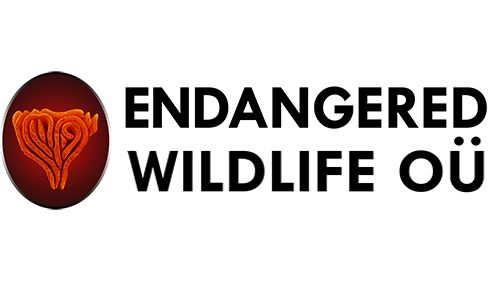A Global Problem
To conceptualise the problem Biodiversity Solutions International is tackling, it is necessary to consider the challenge that faces the world today. In 2018, the world lost its last northern white rhino male, the vaquita porpoise headed further towards extinction, and poachers continue to target rare species. The outlook is no better, with more habitat loss, legislative attacks and extinctions.
Climate change is continuing to threaten species worldwide, with higher water temperatures, more incidences of flooding, deforestation, fires, storms, and reducing oxygen levels. Added to this natural phenomenon, there are significant geopolitical threats for wildlife, with reduced wildlife protection in the USA and threats to the Amazon forest in Brazil, and infrastructural development that are cutting through biodiversity habits. This includes the potential threat to the entire population of the Tapanuli orangutan in Sumatra.
Humans have also caused severe biodiversity loss due to illegal poaching, snaring and wildlife trafficking, while damage to biodiversity and the environment caused by waste, especially plastics, has impacted the ocean life (100% of sea turtles have plastic or microplastics in their digestive systems). At the same time, the emergence of new diseases is having their impact on animals such as bats, frogs and salamanders.
The only solution to the survival of many species is likely to be captive breeding, either to boost the wild populations or to at least keep the species alive once all habitat has been decimated. Current efforts are being made to preserve the red wolf, the Florida grasshopper sparrow, the Madagascar pochard which has been returned to the wild after 15 years as a result of the successful captive-breeding program in Scotland, the Sumatran rhino and the saola.
The Valueless
However, back in 2012, a list was compiled of 100 endangered species that would go extinct purely because they exhibit no obvious benefit to humans. This is a tragic view of the world that one species is ranked more important than another due to their perceived monetary value. And it is particularly harsh considering the pure abstract nature of the monetary unit.
From a philosophical and religious perspective, the first right of a human is life and there is no difference in the value of one human life to another. Extending this premise, there should be no difference in the value of one species’ life to another. Every species evolved on the earth for a purpose and it would be ignorant to think that the loss of a species would have no ultimate effect on the planetary balance.
It has been shown on numerous occasions whereby the removal of a species from an ecosystem can disrupt the entire food chain. It can cause a collapse of the natural predators and an overpopulation of the prey; a potential increase in disease and unsanitary conditions; changes in birth and mortality rates; and unnatural competition.
However, if it is the monetary value that is driving the motivation to save one species over another, then why not derive a means by which it is possible to add a monetary value to every species and every life. This is the objective of Biodiversity Solutions International – to attribute an existence value to biodiversity.
Stewards of Nature
It is the responsibility of humans not to judge which species are worthless and acceptable collateral, but rather to become active stewards of the world’s natural assets, no matter how small, ugly or insignificant they may appear. This is particularly true due to the fact that, for many, the cause of the situation is human intervention rather than natural progression. Human interference includes loss of habitat, hunting, competing for resources, unnatural climate change, pollution and environmental contamination.
But we have not yet passed a point of no return and a balance can once again be restored in the favour of humanity. More than 20 years on, it was found that the reintroduction of wolves reduced coyotes, controlled the deer populations, allowed for increased vegetation and reduced erosion, and even resulted in the redirection of the rivers. All these changes, through the reintroduction of a natural predator, has dramatically changed the ecosystem for the positive and back into a state of balance.
Likewise, the reintroduction of the Eurasian beaver into the UK has significantly improved the standard of the ecosystem. Plants have begun to flourish and fauna have returned to the environment – for example, there has been an increased population of birdlife and amphibians – and most importantly, the rate of water flow has reduced. This is economically important as it helps to reduce the risk of flooding.
While some animals, such as the Eurasian beaver, may prove to hold economic benefit for human society, even smaller, lesser known species play a role within the ecosystem in which they evolved. They act as prey or predator to other species and thereby contribute as a weight in the natural balance of the earth.
It is therefore believed that, no matter how big or small, no animal should be overlooked. No animal deserves to be deemed valueless merely due to the perception that it has no monetary value to humans. It is this challenge of value that Biodiversity Solutions International aims to tackle – to give value to the valueless.

